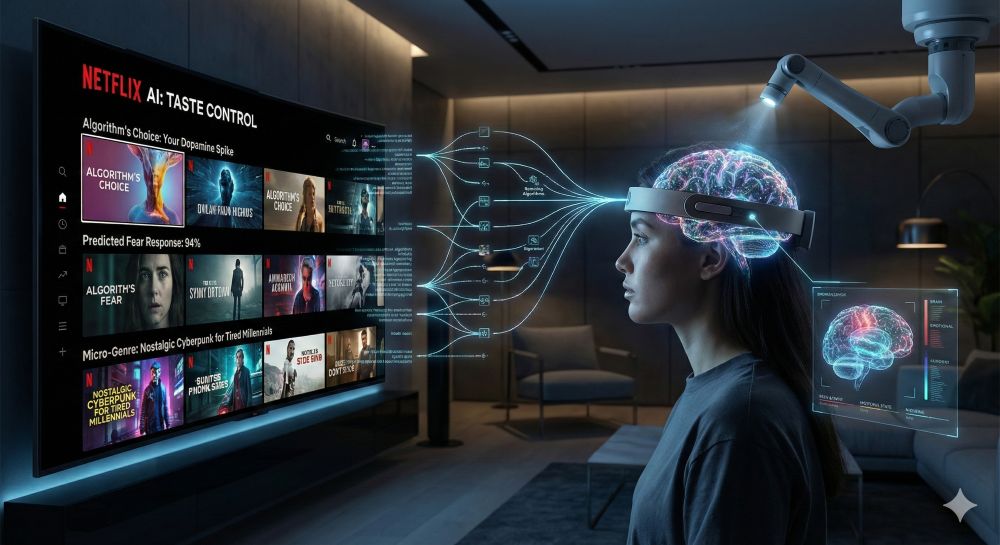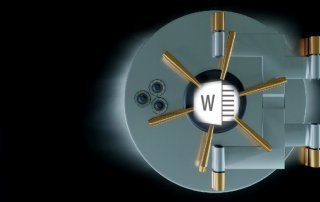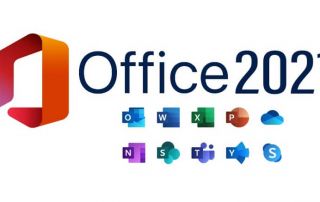Netflix Algorithm 2026: How AI Controls Your Taste
It’s a Wednesday evening in November 2025. You open Netflix, determined to watch that one French arthouse film a colleague recommended. But 30 seconds later, you click on the latest action blockbuster. Was that free will? Probably not.
Netflix is no longer a media company, but a data corporation. While we think we’re consuming films, the algorithm is consuming us. It measures not only what we watch, but how we watch—down to the millisecond. By 2026, this technology will have reached a level of precision that delves deep into behavioral psychology.
We take a look inside the engine room: How AI controls your decisions before you even make them.

The illusion of choice: The “Personalized Artwork”
The dictatorship of the “retention rate” (Why series start so quickly)
Have you noticed that TV series intros have become increasingly shorter in recent years, or that the plot often begins in medias res (right in the middle of the action)? This isn’t an artistic trend; it’s data analysis.
Netflix knows exactly when users stop watching!
- The 5-minute hurdle: If a user pauses or picks up their phone within the first 5 minutes (measurable via app interaction), the likelihood of them finishing the series drops drastically.
- The “hook”: Scripts are often written with data in mind these days. AI signals to producers: “A plot point has to happen in minute 3, otherwise we’ll lose the ‘young adult’ target audience.”
The “skip intro” feature isn’t just a nice touch. It’s a tool for optimizing addiction. It removes the “friction.” Every second of downtime is a second in which the viewer might think: “Shouldn’t I actually be going to sleep?” The button solves this problem by accelerating the dopamine rush of the next scene.
The micro-genre system: Beyond “action” and “drama”
Anyone who thinks Netflix sorts films into categories like “comedy” or “horror” is oversimplifying things. Years ago, Netflix employed human “taggers” who tagged content with thousands of metadata points.
By 2026, AI will combine these tags into micro-genres. There are over 70,000 of them. Examples of such internal categories are:
- “Dark Scandinavian crime dramas with a strong female lead in her 40s.”
- “Visually stunning sci-fi films about artificial intelligence from the 2010s.”
When Netflix tells you: “Because you watched Dark…”, it’s not looking for other German series. It’s looking for matches in these extremely specific micro-tags (atmosphere, pacing, color palette). This creates the “echo chamber effect”: We are pushed deeper and deeper into a niche and hardly discover any content that does not correspond to our previous pattern.
Predictive Greenlighting: The algorithm as producer
The most profound change, however, is happening behind the scenes. Netflix no longer buys series based solely on gut feeling.
Back in 2013, House of Cards was ordered because data showed that people liked David Fincher, they liked Kevin Spacey, and they liked the British original. Today, in 2026, predictive greenlighting is standard practice. Before a series is even filmed, AI can simulate:
- How many of the 280 million subscribers will watch the first episode?
- How many will finish the season (completion rate)?
This explains why so many series are canceled after season 1 or 2, even if they have a fan base. The algorithm calculates the “lifetime value” of a series. If a series doesn’t attract new subscribers and existing ones only watch it casually, it’s worthless to the algorithm—no matter how good the reviews are. Art becomes a mathematical equation.
Conclusion: Who controls the remote control?
Netflix’s technology is both fascinating and frightening. It serves us entertainment with a precision no linear TV channel could ever achieve. But the price is our autonomy.
We no longer discover; we are fed. When we scroll through Netflix in 2026, we’re not looking at a video store—we’re looking in a mirror that shows us exactly what we want to see so we never switch off.
Beliebte Beiträge
Protect Word documents from editing
Protect your documents in Microsoft Word from unauthorized editing or block access completely.
Show and remove duplicate entries in Excel | Tutorial
We explain how to remove duplicate entries from Excel. And also how you can only display duplicate entries in Excel but not delete them immediately in order to decide on a case-by-case basis.
Custom Formatting Excel – Number Format Codes Excel
We use a practical example to explain the importance and possible uses of custom formatting in Excel. Number format codes in Excel are not rocket science!
How to create a dynamic table in Excel
This is how you conveniently create a dynamic table in Excel and have it automatically carry out calculations.
Use macros correctly in Excel
Almost everyone has heard of the term "macro" in the context of Excel, and perhaps has shied away from it because it sounds like a rather complicated affair for which you have to deal with Excel programming.
Microsoft Office 2021 – Is the switch worth it?
Since October 5, 2021, the time has finally come. After Office 2019, Office 2021 is now at the start. We took a closer look at the new Office version and found out whether the switch is worth it.

































